8 types of watercolor
Watercolors are a favorite medium for artists everywhere, but that doesn’t mean you have to buy the cookie-cutter set of tubes at the art store. Here are 8 different types of watercolor to consider adding to your collection:
Pans
Pan watercolors are the most common form of watercolor and come in a variety of sizes. Pans are made with pigments, additives, and binders; the quality is the same as in tubes. They’re highly pigmented so that painters can use them straight out of the pan. They’re also quite versatile and come in various tones, making them great for beginners.
Pans have two sizes: pan and half-pan, the most common. Half pans contain 1.5 ml and the pans 3 ml. You can buy pans individually or in sets, with a mixing palette included. You can also buy only the colors you like and make your palette. They’re portable and convenient, making them perfect for those on-the-go moments when you want to paint but don’t want to lug around a big palette with you. When choosing your palette, make sure you have separate mixing wells.
You can see here how to setup your watercolor palette:
The pigment is mixed with water and applied directly from the pan onto your paper. Pans don’t have much white space around them, and if you spill some watercolor out of your brush onto the side of your tray, it will run down into all the other colors in that row! When rubbing with the brush on pans, you can accidentally lift the color next to it. You can also use a not-so-clean brush to pick a color from the pans, getting dirty colors, which can lead to messy results later on when picking a color.
Mixing the right color and the right amount of mix will take some time. You can rub for quite a while until you get the correct dilution, which can harm your brushes. On the other hand, this allows using only the right amount of paint without waste.
Small sets of 10 or 12 pans in a metallic box with a mixing palette are very convenient to paint on the go for urban sketching or Plein air.
Tubes
Tubes come in different sizes, which can be helpful if you paint a lot with watercolors. You can also buy tubes and squeeze the paint in empty pans to get the best of the two! There are many brands of watercolors available, and their prices can vary a lot! You can find budget versions, but if you want good-quality paints, you should aim for artist-quality colors. Even if tubes may seem expensive, comparing the price per ml will soon find that tubes are more economical than pans. A 15 ml tube can fill about seven half-pans, so I’ll let you do the maths!
The paint from the tube is creamy and flows well, and it’s easy to dilute with water, as you don’t need to rub the pan to get pigments. The colors are bright and intense, and using the paint directly from the tube can vary the intensity by adding more water to the mix.
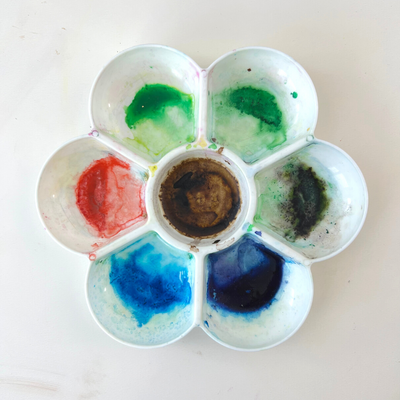
If you buy tubes of watercolor paint, either individually or in sets, you will need a palette to store the squeezed paint and mix your colors. You can find many different palettes, and you should choose one that works with your budget and preferences. If you’re starting with watercolors, you may want to start with an inexpensive plastic palette to see if this medium is suitable for you before investing in something more expensive. If you’re an experienced artist who likes to take their paints on the go, consider getting a travel palette so that it’s easy for you to carry around all your supplies.
The main difficulty with watercolor tubes is how much paint you use. If you squeeze too much, you’ll have to let it dry and use it as pans, but you’re losing the creamy consistency and ease of use. If you don’t squeeze enough and add water, the paint will become too diluted.
Liquid watercolors
Liquid watercolors are made of pigments or dyes, depending on the brands. If you plan to use watercolor techniques like removing paint in some parts with a cloth, you must choose pigments-based liquid watercolors. Dye-based liquid watercolors will fuse inside the paper and won’t be removable.
They come in small bottles with a pipette, allowing you to ideally dose the amount you use.
The main advantage of liquid watercolors is that they’re easy to use; squeeze out some paint onto your palette, dip your brush into it, add water as you need, and start painting! You can mix colors on the palette and add some drops of blue inside yellow to get a variety of greens, for example.
You will need a mixing palette with separate wells to make your mixes.
In addition to being simple to use, liquid watercolors also tend to be quite affordable—you don’t need very much of them. Liquid watercolors are also very popular with children, who love bright colors and easy-to-use bottles. You can find them at most art supply stores, but they’re not as widely available as tube or pan watercolors.
Liquid watercolors are not easy to take on the go for Plein air painting, as they may spill in your bag. Also, if you travel by plane, it might be forbidden.
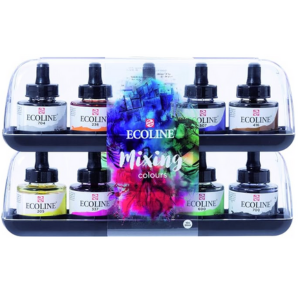
Watercolor pencils
Watercolor pencils are a mixed medium of drawing and painting. They combine the portability and precision of traditional colored pencils with the versatility of paint. Water-soluble binder holds the pigment in watercolor pencils, while waxy or oil-based binders hold it in colored pencils.
The pigments in watercolor pencils are more finely ground than those in traditional colored pencils, making them easier to blend and layer with other colors. Watercolor pencils come in a wide range of hues, including cool tones that make it easy to create the illusion of light and shadow. Painters can also use them like conventional pencils to draw or sketch out a composition before painting with watercolors.
And if you want something that will let you get started quickly without having to worry about mixing paints, watercolor pencils are a great option—they blend well when wetted and dry in seconds. Watercolor pencils are an excellent option for beginners since they’re easy to use and blend well when wet. They also dry much faster than traditional watercolors, so you can start painting quickly without worrying about mixing paints.
I love Inktense pencils, even if technically they are ink and not watercolor. But they are so highly pigmented that it’s a pleasure to work with.

Watercolor crayons
Crayons are the perfect tool for beginners, as they’re easy to use and highly portable. You can get started quickly, and they blend well when wet. They are also great for traveling because they don’t spill like paint or watercolors, making them ideal for Plein air painting or sketching on the go. And if you want something that will let you get started quickly without having to worry about mixing paints, watercolor pencils are a great option—they blend well when wetted and dry in seconds.
You can sharpen them and draw fine lines directly or fill large areas with the side of the crayon. Crayons are also a great option to start painting with kids. They’re easy to use and come in a wide variety of colors, which makes them great for young artists. You can find them with a paper around or inside wood for a better prehension for small hands.
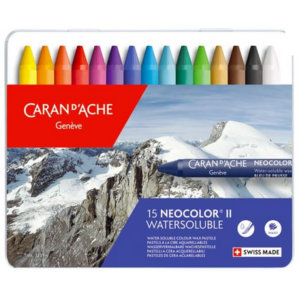
Watercolor sticks
Watercolor sticks are dry paint inside a paper wrap. You can use them by rubbing a wet brush on the stick to lift the pigments or by applying them on the paper and wetting it afterward. Depending on the brands and colors, you will still have visible marks on your paper once the pigment is dry. This can be an advantage if you want your painting to be textural or have a painterly effect. The disadvantage is that the color may not be as vibrant as other watercolor paints and mediums, though it’s still possible to achieve vibrant colors if you layer your strokes and add more water.
The main issue is that watercolor sticks are breakable and will likely end as a mess of flakes in your drawer. Depending on the additives and binder inside the stick, some may become sticky and hard to handle.
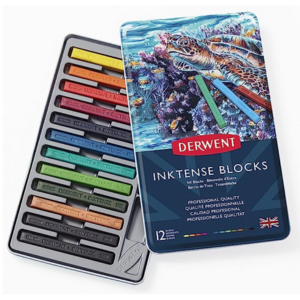
Watercolor on sheets
Watercolor sheets are dye-based, meaning the colors are vibrant and intense but not lightfast. It’s portable and perfect for urban sketching and Plein air sketches. You can use them with a water brush and get immediate results.
The downside is that you will need some surface to make your mixes if you want more than the colors available. Also, when you’re rubbing with your wet brush, you’ll leave some moisture on the dye, and closing the booklet will stick the paint to the paper.
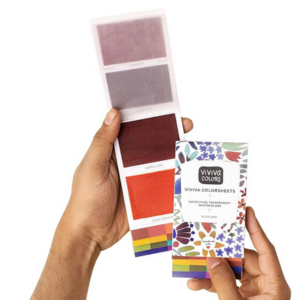
Watercolor brushpens and markers
They are primarily dye-based and are better for sketchbook projects than framed art, as they may fade. You can use them in various ways, with a brush or pen. Brushpens can be used on any paper, but the ink will bleed through some cheaper ones. You can also use them for small line drawings or very fine details.
They are great for intense, vibrant colors and make nice gradients. You can use them to fill large areas, add water or leave it as it is. They are great for lettering.

Conclusion
Did you know these 8 types of watercolor paint? You don’t have to limit yourself to one type of watercolor. Explore and experiment with all the different ways you can use it!





